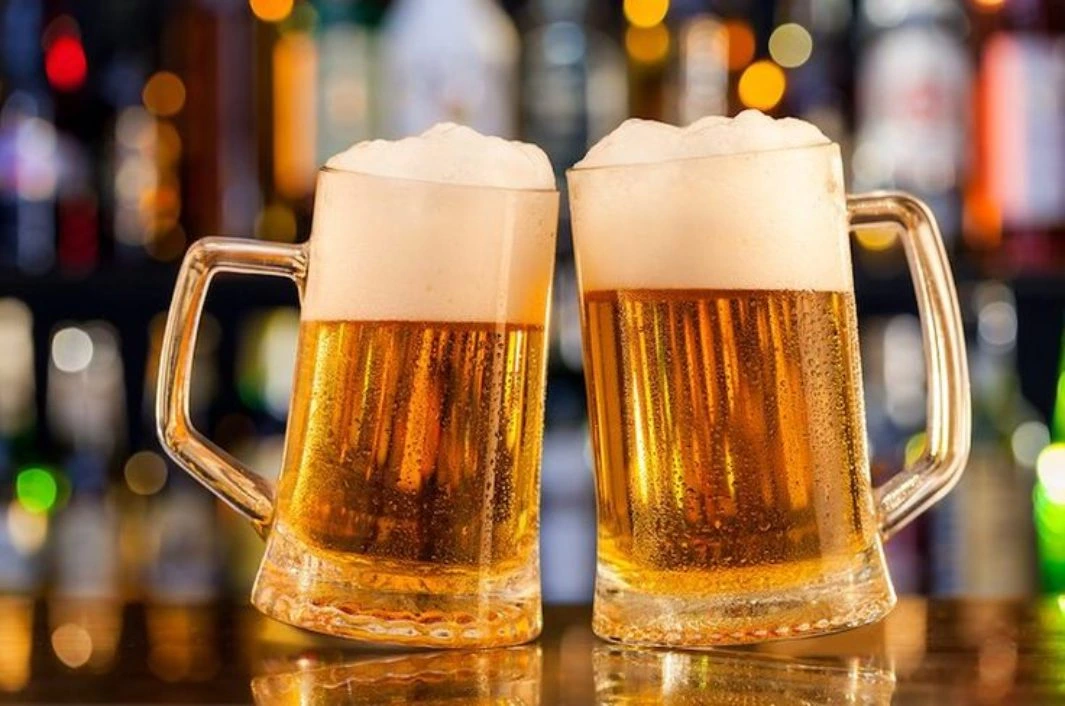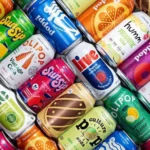
Beer is more than just a refreshing beverage—it’s a cultural icon, a historical staple, and a scientific marvel. From ancient civilizations brewing barley-based concoctions to modern craft breweries pushing the boundaries of flavor and fermentation, beer has evolved into one of the most beloved drinks on the planet. Whether you’re a casual drinker, a homebrewing enthusiast, or a trivia lover, this list of 25 fascinating beer facts will surprise you with its depth, diversity, and downright quirky details. We’ll dive into record-breaking brews, centuries-old traditions, and even some unexpected uses of beer that go far beyond the pint glass. So grab your favorite cold one and let’s explore the world of beer—one amazing fact at a time.
1. Beer is the third-most popular drink in the world
Beer ranks just behind water and tea in global consumption, making it the most widely consumed alcoholic beverage. Its popularity spans cultures and continents, with billions of gallons consumed annually. Beer’s appeal lies in its affordability, variety, and social significance, making it a staple at gatherings, festivals, and meals across the globe.
2. The Czech Republic consumes 140 liters of beer per person annually
Czech citizens drink an average of 140 liters of beer per person each year, which is roughly 380 milliliters daily. This high consumption rate is deeply rooted in Czech tradition, where beer is often cheaper than bottled water and served with most meals. The country’s rich brewing history and pride in local lagers contribute to this impressive statistic.
3. China consumes the most beer overall
China leads the world in total beer consumption, producing over 341 million hectoliters annually. Despite lower per capita consumption compared to countries like the Czech Republic or Germany, China’s massive population drives its dominance in the global beer market. The country’s expanding middle class and growing interest in craft beer have further boosted demand.
4. The earliest evidence of beer dates back to 3500 BC
Archaeological discoveries in western Iran revealed traces of barley beer dating back to around 3500 BC. These findings suggest that beer was one of the earliest fermented beverages created by humans, predating written language. Early beer was likely consumed during religious ceremonies and daily meals, highlighting its importance in ancient societies.
5. The strongest beer in the world is 67.5% ABV
Brewed in Scotland, Snake Venom holds the record for the highest alcohol content in a beer at 67.5% alcohol by volume. This is stronger than most liquors, including whiskey and vodka. Due to its potency, it’s sold with warning labels and is intended for sipping rather than casual drinking. It’s a novelty product that showcases the extremes of brewing science.
6. The largest glass of beer ever poured held 330 gallons
A Guinness glass filled with nearly 330 gallons of beer set a record for the largest single serving. That’s equivalent to over 2,600 pints. This feat was achieved at a pub in California and required a custom-made container and a coordinated pouring effort. It was part of a promotional event celebrating beer culture.
7. The oldest operating brewery dates back to 1040 AD
Weihenstephan Brewery in Bavaria, Germany, has been brewing beer since 1040 AD, making it the oldest continuously operating brewery in the world. Originally run by Benedictine monks, the brewery has survived wars, plagues, and political upheaval. Today, it combines centuries-old traditions with modern brewing technology.
8. California had 1,106 breweries in 2017
In 2017, California led the United States in brewery count with 1,106 registered breweries. This number reflects the state’s thriving craft beer scene, which includes microbreweries, brewpubs, and large-scale operations. California’s diverse population and innovative culture have made it a hub for beer experimentation and entrepreneurship.
9. The U.S. beer industry earns over $100 billion annually
The American beer industry generates more than $100 billion in revenue each year. This includes domestic brands, imports, and craft brews. The industry supports millions of jobs in brewing, distribution, retail, and hospitality, making it a vital part of the national economy.
10. The U.S. craft beer market is worth $27.58 billion
Craft beer accounts for nearly a quarter of all beer sales in the United States, with a market value of $27.58 billion. This segment includes thousands of independent breweries and millions of homebrewers. The craft movement emphasizes quality, creativity, and local ingredients, contributing to its rapid growth.
11. North Dakota consumes 43.3 gallons of beer per adult annually
North Dakota has the highest per capita beer consumption in the United States, with each drinking-age adult consuming an average of 43.3 gallons annually. This figure reflects the state’s strong beer culture, influenced by cold winters, rural traditions, and social gatherings centered around beer.
12. Germany produces 90 million hectoliters of beer annually
Germany is one of the top beer-producing countries in the world, with an annual output of 90 million hectoliters. The country’s brewing industry is known for its adherence to the Reinheitsgebot, or Beer Purity Law, and its wide variety of beer styles, including lagers, pilsners, and wheat beers.
13. Oktoberfest attracts over 6 million visitors
Held annually in Munich, Oktoberfest is the world’s largest beer festival, drawing more than 6 million attendees. The event spans over two weeks and features traditional Bavarian music, food, and beer served in one-liter steins. Visitors from around the world come to celebrate German culture and enjoy the festive atmosphere.
14. A bottle of Arctic Ale brewed in 1875 sold for $4,500
A rare bottle of Allsopp’s Arctic Ale, brewed in 1875 for a polar expedition, was sold at auction for $4,500. This beer is one of the oldest surviving examples of its kind and is considered a collector’s item. Its historical significance and rarity contributed to its high value.
15. Beer was used as medicine in Ancient Egypt
In Ancient Egypt, beer was not only a beverage but also used for medicinal purposes. It was considered cleaner than Nile water and was used in treatments such as enemas and douches. Beer provided essential nutrients and was a staple in both health and daily life.
16. 17 types of beer were listed in an Egyptian document
An ancient Egyptian papyrus listed 17 distinct types of beer, each with poetic names like “joy-bringer” and “heavenly.” This diversity reflects the sophistication of Egyptian brewing and its role in religious ceremonies, social gatherings, and daily sustenance.
17. Heineken designed beer bottles as bricks in 1963
In 1963, Heineken developed WOBO bottles—glass containers shaped to interlock like bricks. The idea was to reduce waste and provide building materials for low-income housing. Though never mass-produced, the concept remains a symbol of sustainable design and innovation.
18. Beer was a dietary staple in Medieval Europe
During the Middle Ages, beer was consumed daily by all social classes. It was safer than water and provided calories and nutrients. Monks even practiced “beer fasts” during Lent, consuming only beer for 40 days. Beer was often referred to as “liquid bread” due to its nutritional value.
19. The Reinheitsgebot was enacted in 1516
Germany’s Beer Purity Law, known as the Reinheitsgebot, was established in 1516. It mandated that beer be brewed only with barley, hops, and water. This law shaped global brewing standards and is still influential today, especially in traditional German breweries.
20. Pizza-flavored beer exists
The Pizza Beer Brewery created a beer that tastes like pizza by using ingredients such as tomatoes, garlic, and oregano during the brewing process. This experimental brew showcases the creativity of craft brewers and the endless possibilities for flavor innovation in beer.
21. Beard yeast was used to brew beer
Rogue Ales in Oregon brewed a beer using yeast harvested from their brewmaster’s beard. This unusual method highlights the diversity of yeast strains and the adventurous spirit of modern craft brewing. The beer was safe to drink and served as a marketing novelty.
22. Beer was used to pay pyramid workers
In Ancient Egypt, laborers building the Pyramids of Giza received daily rations of beer as part of their wages. Beer provided hydration, nutrition, and energy, making it an essential part of the workers’ diet and a form of currency in ancient economies.
23. Beer can reduce kidney stone risk by 40%
Studies have shown that moderate beer consumption may reduce the risk of kidney stones by up to 40%. Beer’s diuretic properties help increase urine flow, which can prevent the formation of mineral deposits that lead to stones. However, excessive consumption can have adverse effects.
24. Beer contains B vitamins
Beer contains several B vitamins, including niacin, riboflavin, and folate, which are essential for metabolism and energy production. While beer is not a substitute for a balanced diet, it does offer some nutritional benefits when consumed in moderation.
25. The U.S. sells 208.6 million barrels of beer annually
American breweries sell approximately 208.6 million barrels of beer each year, which equals about 2.9 billion cases. This massive volume underscores beer’s dominance in the U.S. beverage market and its cultural significance in American society.
General Beer FAQs
1. What is beer made of?
Beer is traditionally made from four main ingredients: water, malted grains (usually barley), hops, and yeast. Water makes up about 90–95% of beer. Malted grains provide sugars for fermentation, hops add bitterness and aroma, and yeast converts sugars into alcohol and carbon dioxide.
2. What are the different types of beer?
The two primary categories are ales and lagers, distinguished by their yeast and fermentation methods. Ales (e.g., IPA, stout, porter) use top-fermenting yeast and ferment at warmer temperatures. Lagers (e.g., pilsner, bock) use bottom-fermenting yeast and ferment at cooler temperatures. There are also hybrid styles and specialty beers like sour ales, wheat beers, and saisons.
3. What does IPA stand for?
IPA stands for India Pale Ale. It originated in England in the 18th century and was brewed with extra hops to preserve the beer during long sea voyages to India. Today, IPAs are known for their bold hop flavors and aromas, ranging from citrusy and piney to tropical and floral.
4. How many calories are in a beer?
A 12-ounce serving of beer typically contains 150 to 250 calories, depending on the style. Light beers may have around 100 calories, while stronger styles like imperial stouts or double IPAs can exceed 300 calories. Calories come primarily from alcohol and residual sugars.
5. How much alcohol is in beer?
Most beers contain between 4% and 6% alcohol by volume (ABV). Light beers may be as low as 3.5%, while strong ales and specialty brews can reach 10% or more. The strongest commercially available beer, Snake Venom, has an ABV of 67.5%.
6. Is beer gluten-free?
Most traditional beers contain gluten, as they are brewed with barley or wheat. However, there are gluten-free beers made from grains like sorghum, rice, or millet, and gluten-reduced beers that use enzymes to break down gluten proteins.
7. What is the difference between ale and lager?
The key difference lies in the yeast and fermentation temperature. Ales use top-fermenting yeast and ferment at warmer temperatures (15–24°C), resulting in fruity and complex flavors. Lagers use bottom-fermenting yeast and ferment at cooler temperatures (7–13°C), producing clean, crisp profiles.
8. What is the foam on top of beer called?
The foam is known as the head. It forms when carbon dioxide escapes during pouring and interacts with proteins and hop compounds. A good head enhances aroma and mouthfeel and is considered a sign of proper pouring and quality.
9. Why does beer taste better in a glass?
Drinking beer from a glass improves the experience by enhancing aroma, visual appeal, and carbonation control. A glass allows volatile compounds to escape, revealing the beer’s full bouquet. It also showcases color, clarity, and head retention.
10. What is ABV in beer?
ABV stands for Alcohol by Volume, a measure of how much alcohol is in a beverage. For example, a beer with 5% ABV contains 5 milliliters of alcohol per 100 milliliters of liquid. It helps consumers gauge strength and effects.
🧪 Brewing & Ingredients FAQs
11. What are hops and why are they used?
Hops are the cone-shaped flowers of the hop plant. They add bitterness, flavor, and aroma to beer, and also act as a natural preservative. Different hop varieties contribute notes like citrus, pine, spice, or tropical fruit.
12. What does IBU mean?
IBU stands for International Bitterness Units, a scale that measures the bitterness of beer. Light lagers may have 5–15 IBUs, while IPAs can exceed 60–100 IBUs. However, perceived bitterness also depends on malt sweetness and balance.
13. What is yeast’s role in brewing?
Yeast is a microorganism that consumes sugars from malted grains and produces alcohol and carbon dioxide. Different yeast strains influence flavor, aroma, and mouthfeel. Ale yeasts produce fruity esters, while lager yeasts yield cleaner profiles.
14. Can beer be brewed at home?
Yes, homebrewing is legal in many countries and can be done with basic equipment. Kits are available for beginners, and advanced brewers often experiment with recipes, yeast strains, and fermentation techniques. However, local laws may regulate production limits.
15. What is a beer flight?
A beer flight is a sampling tray of small pours (usually 4–6 ounces each) of different beers. It allows drinkers to explore various styles, flavors, and breweries without committing to a full pint. Flights are popular in taprooms and festivals.









